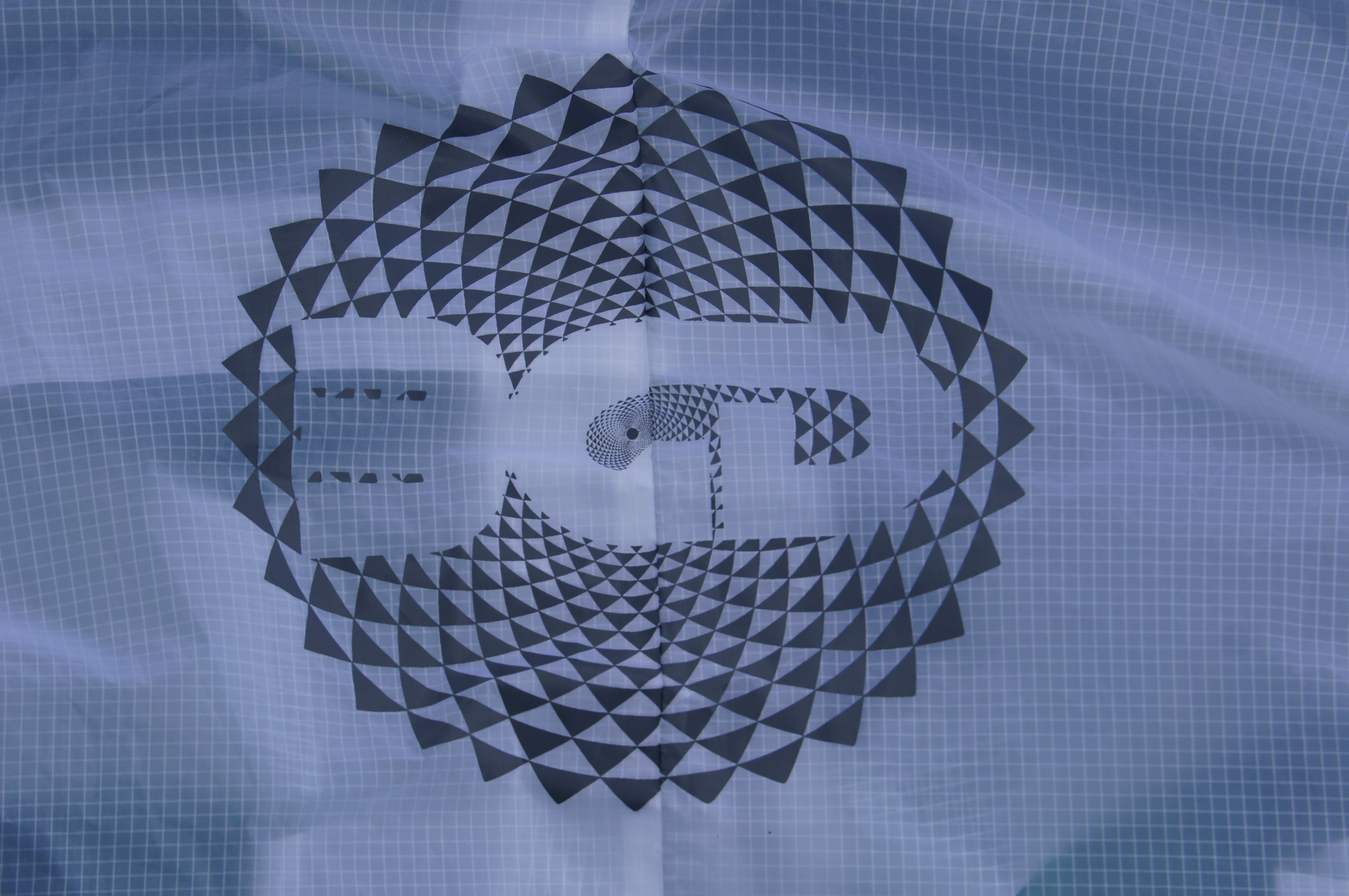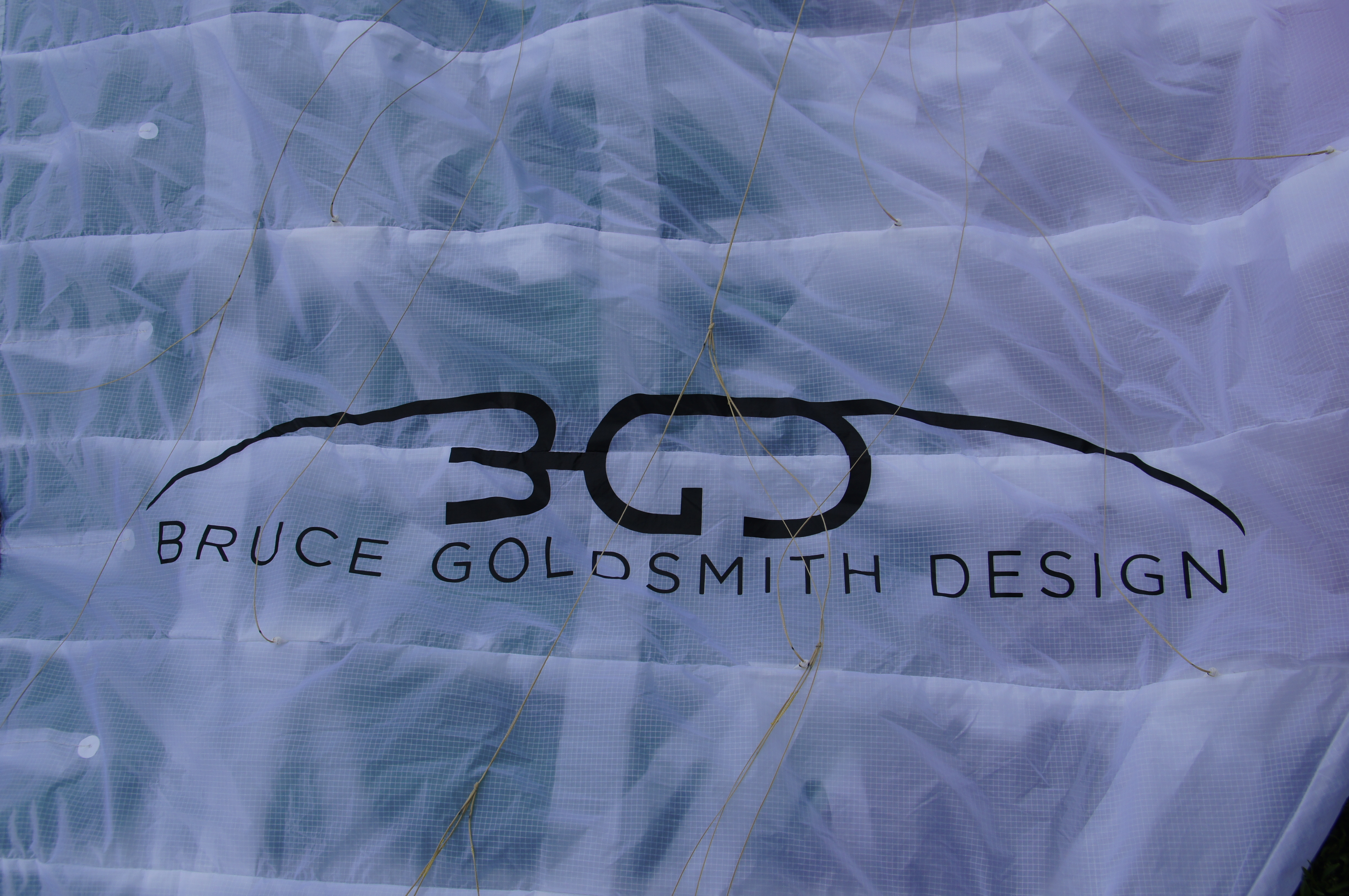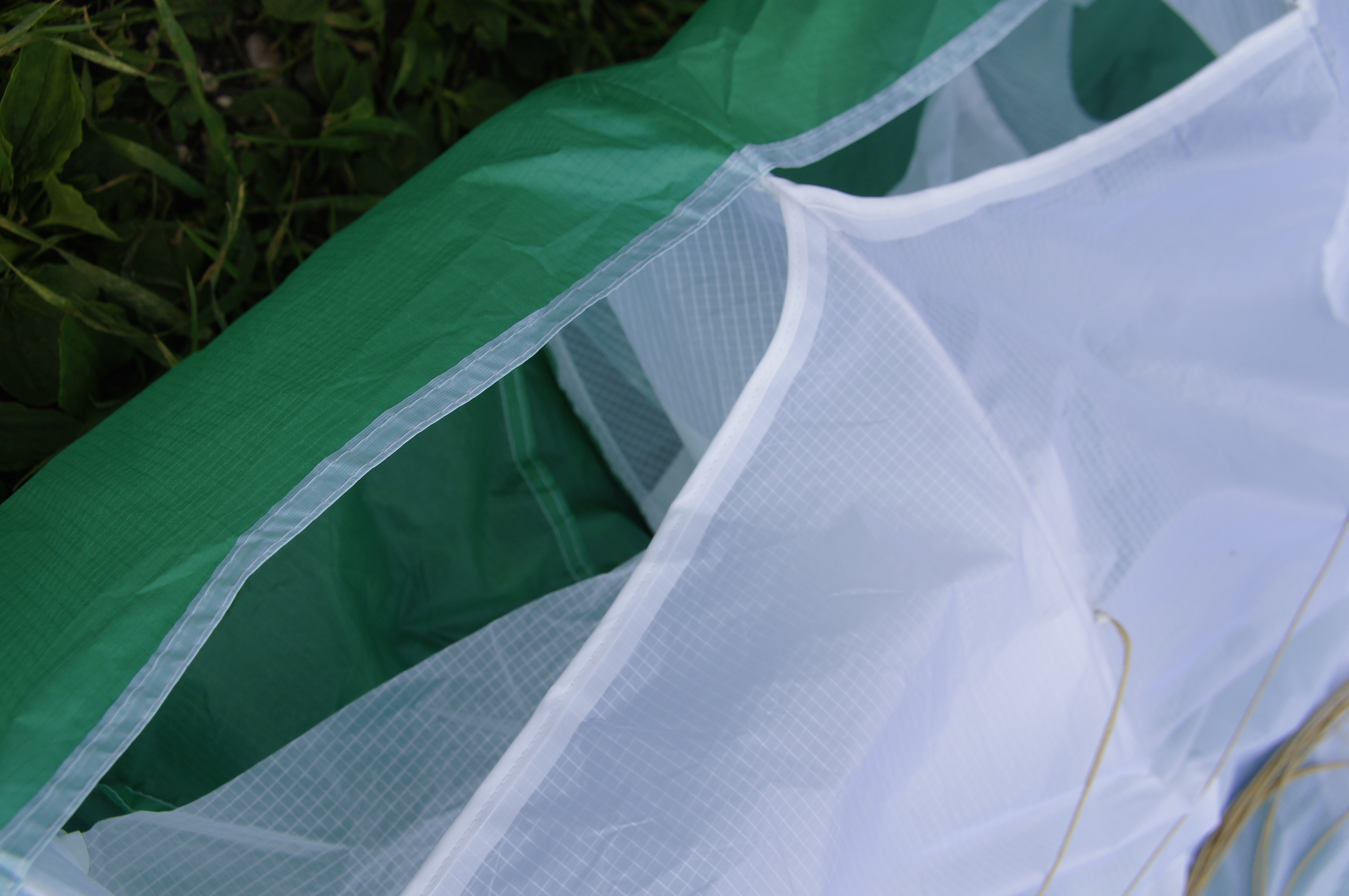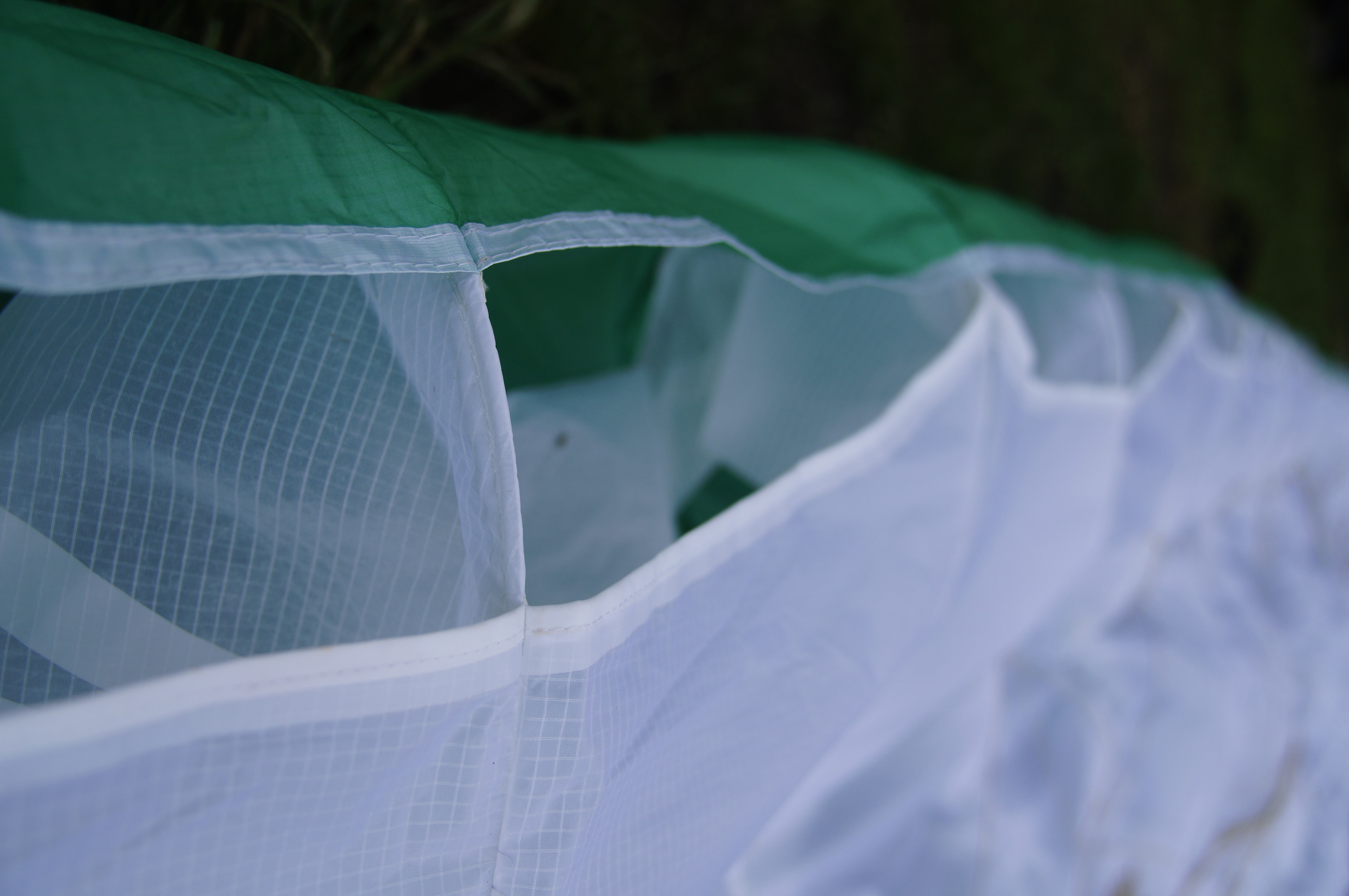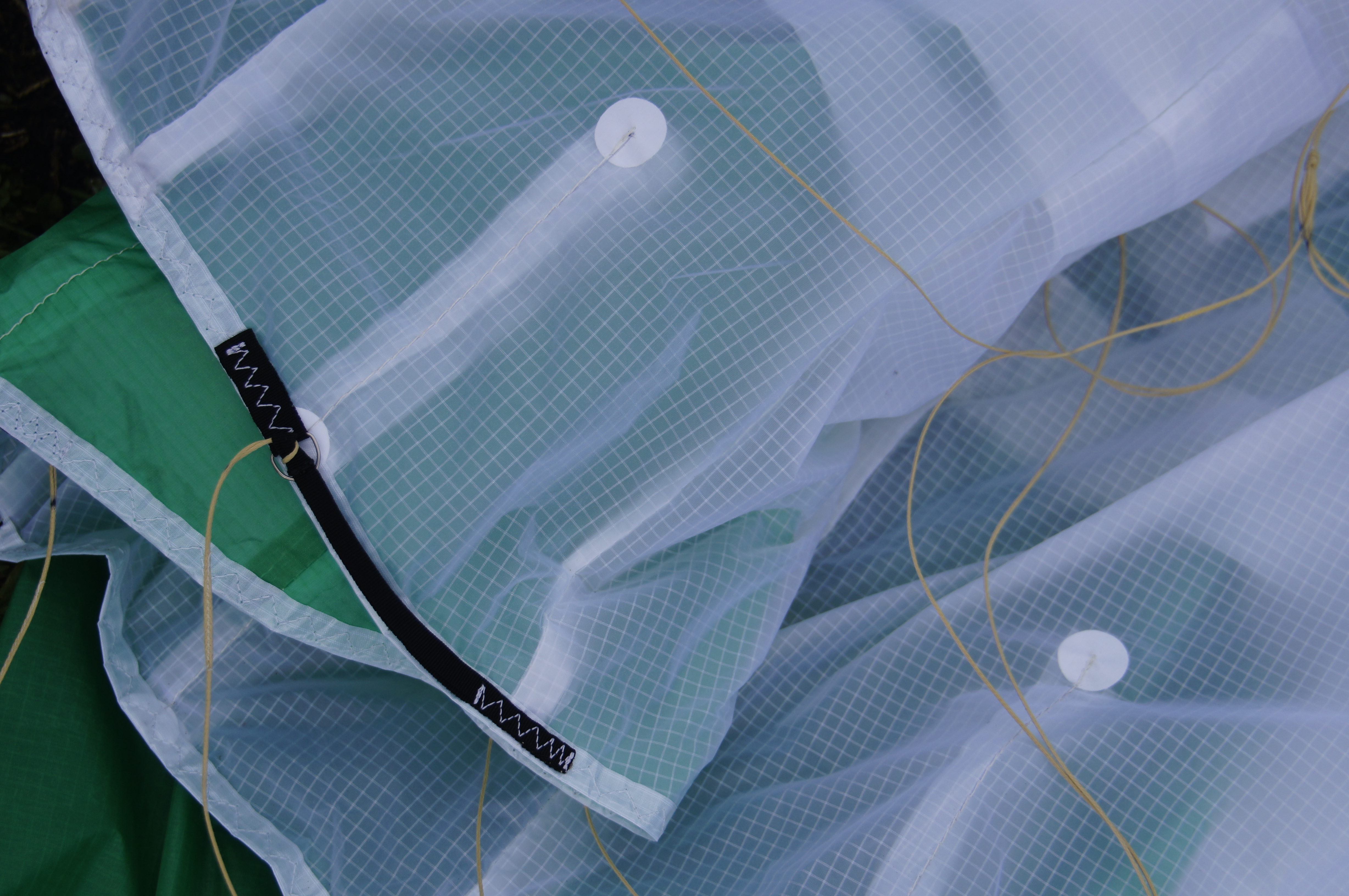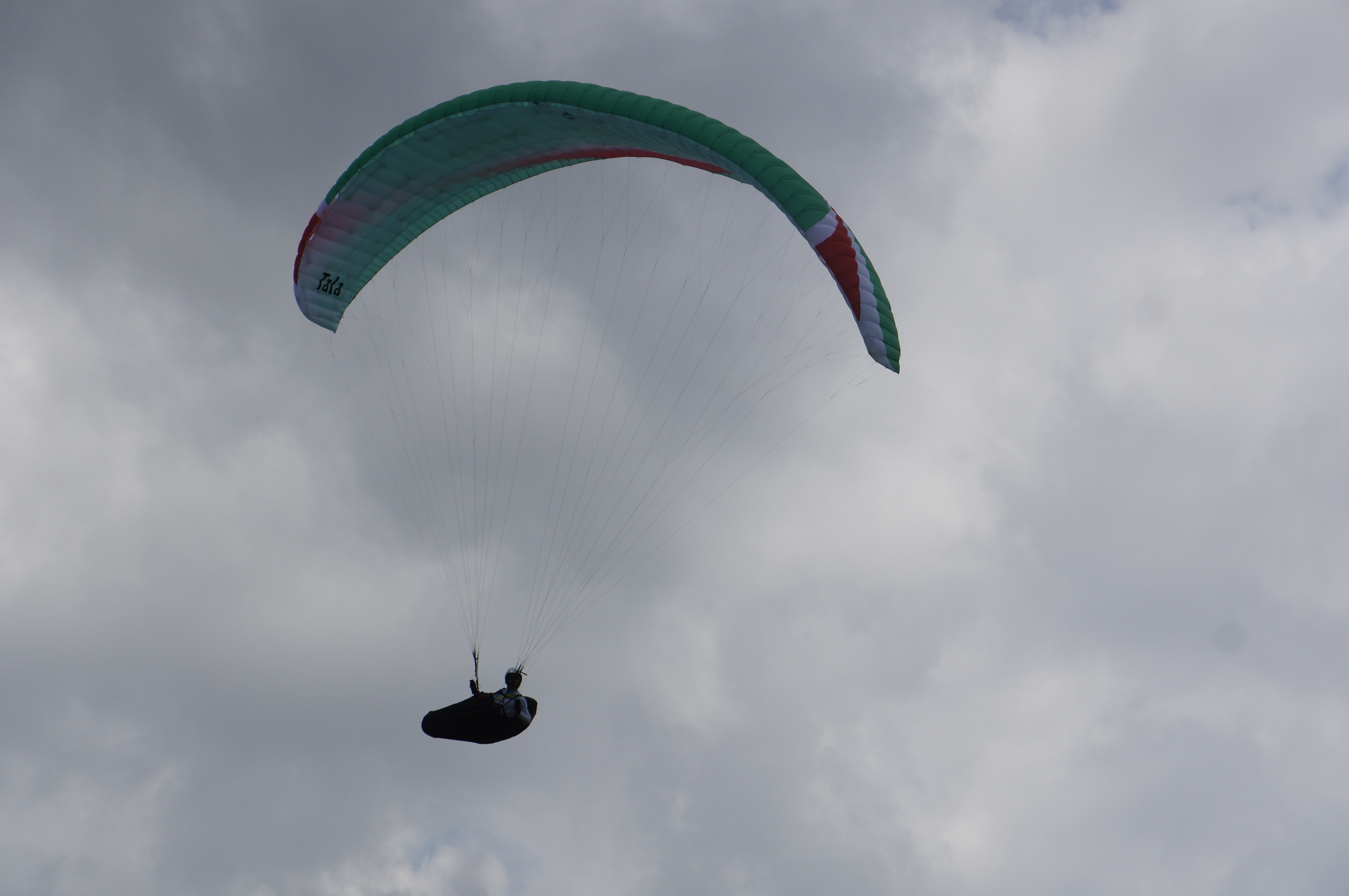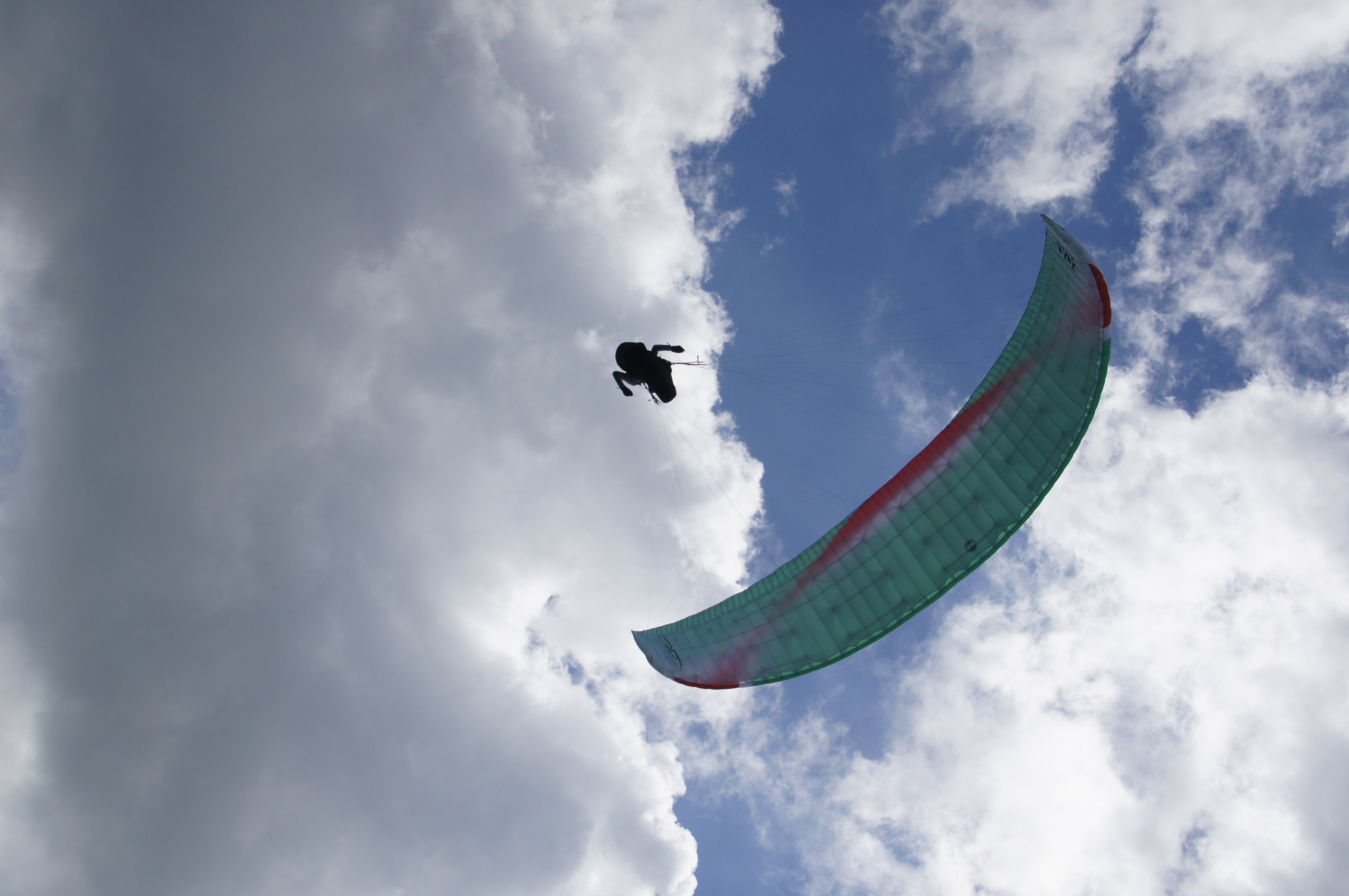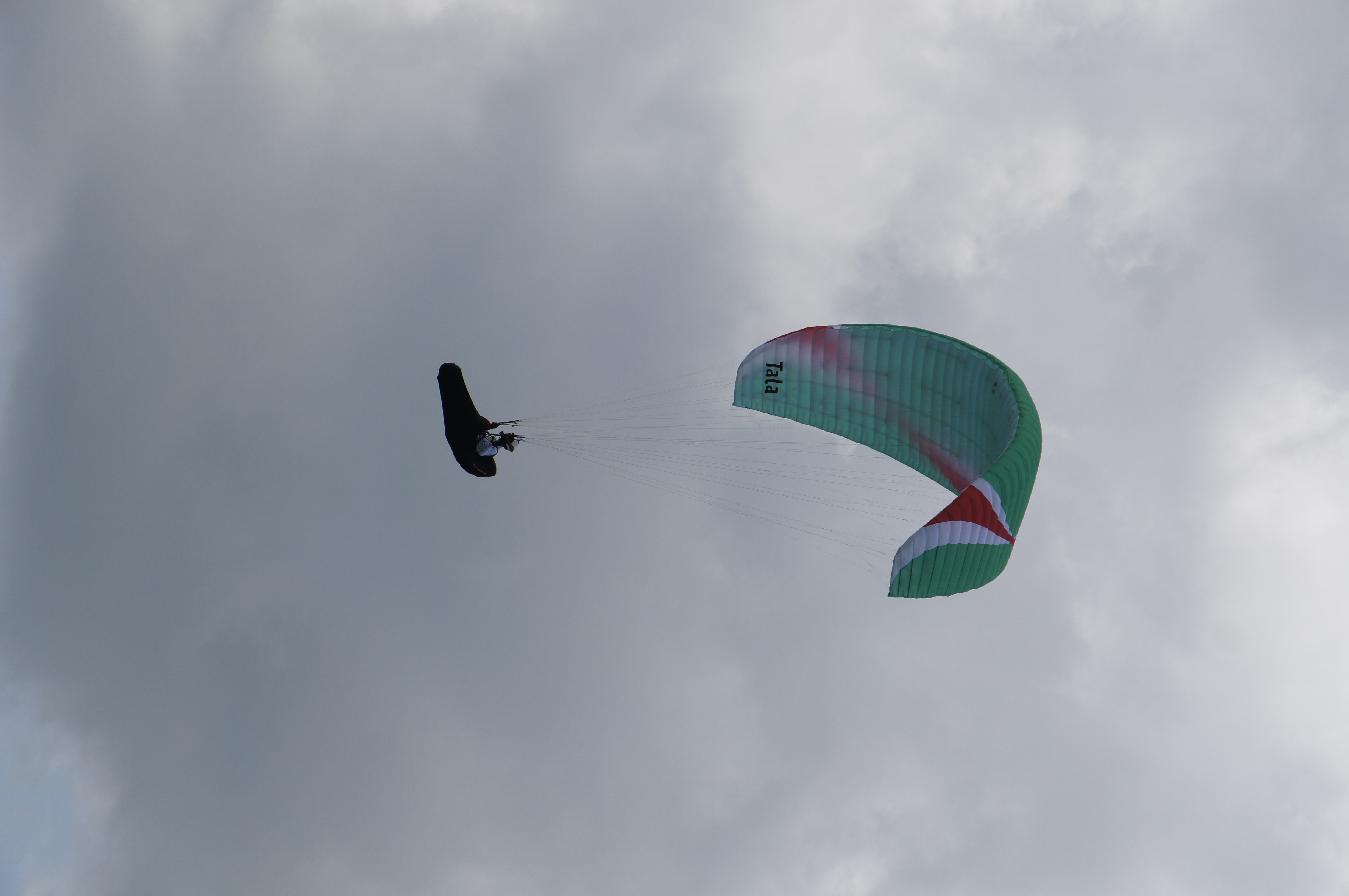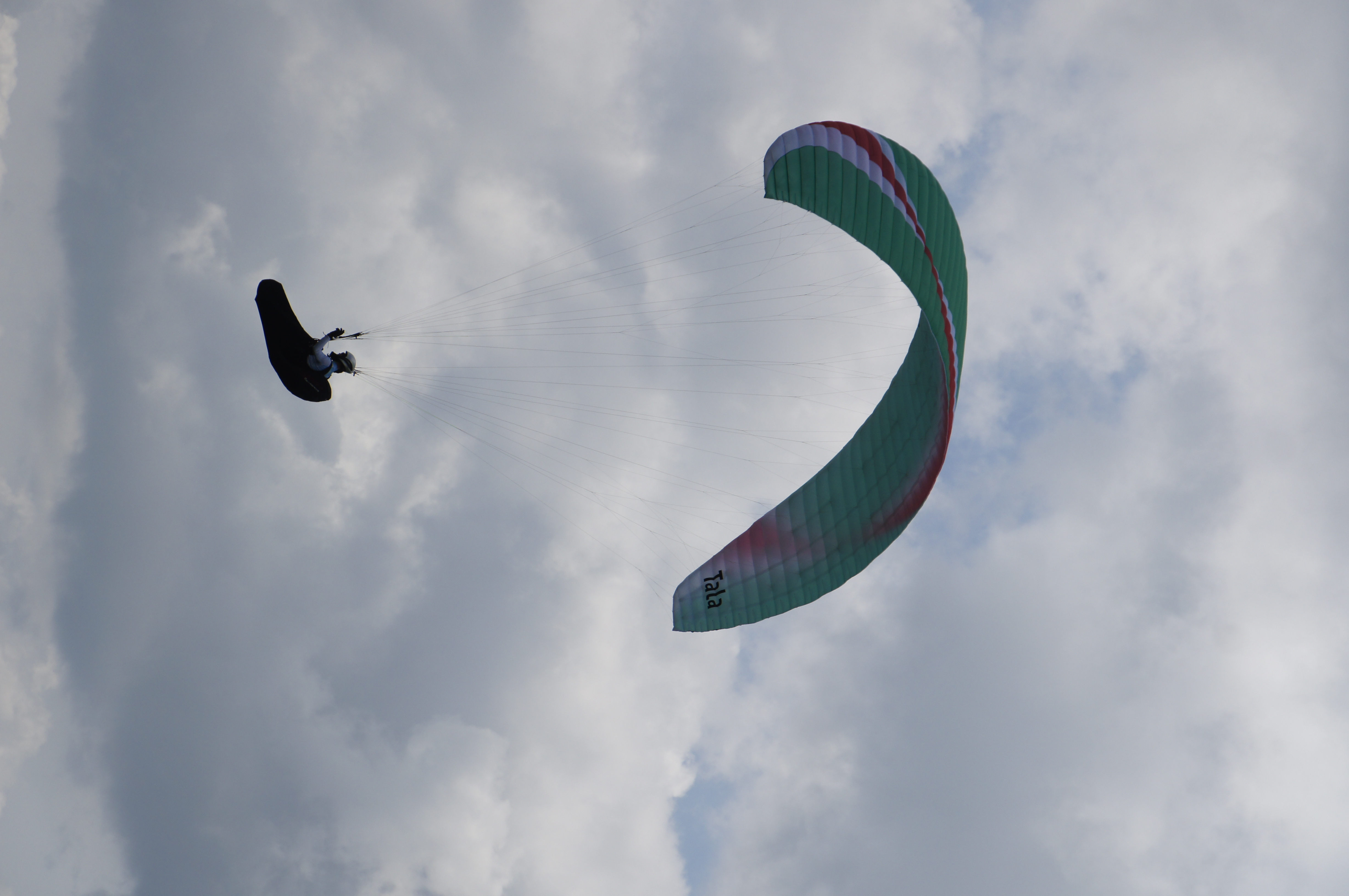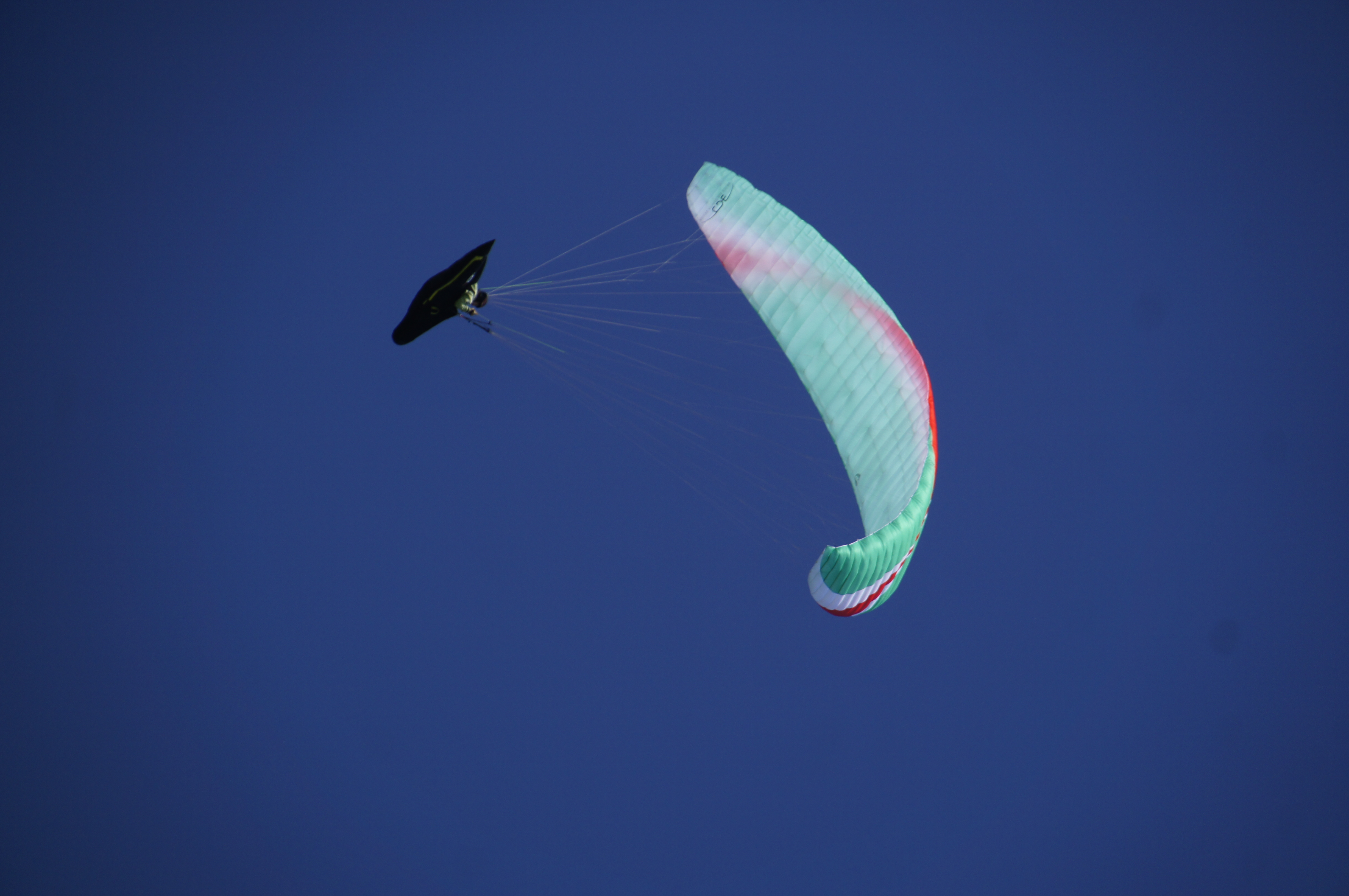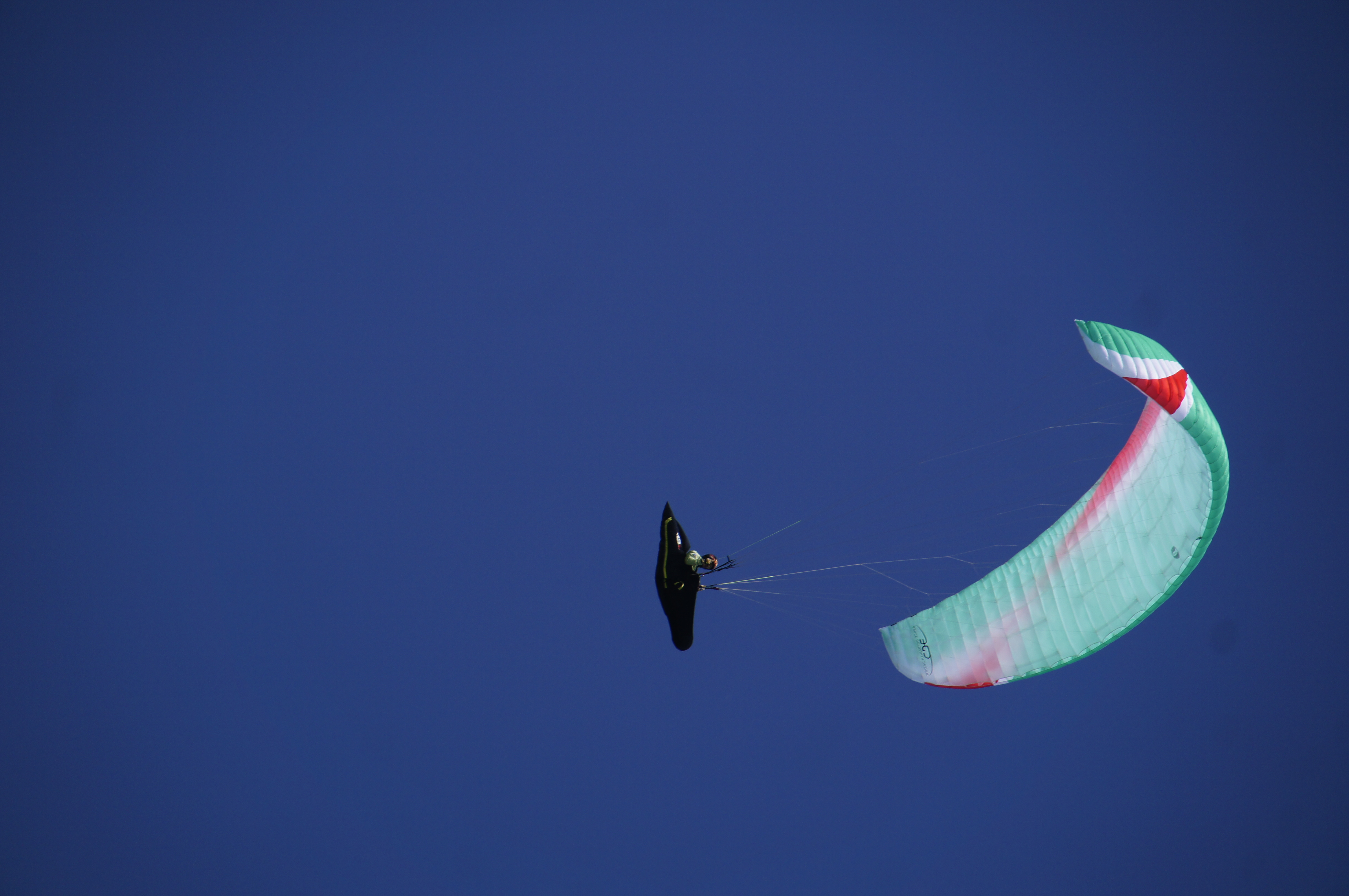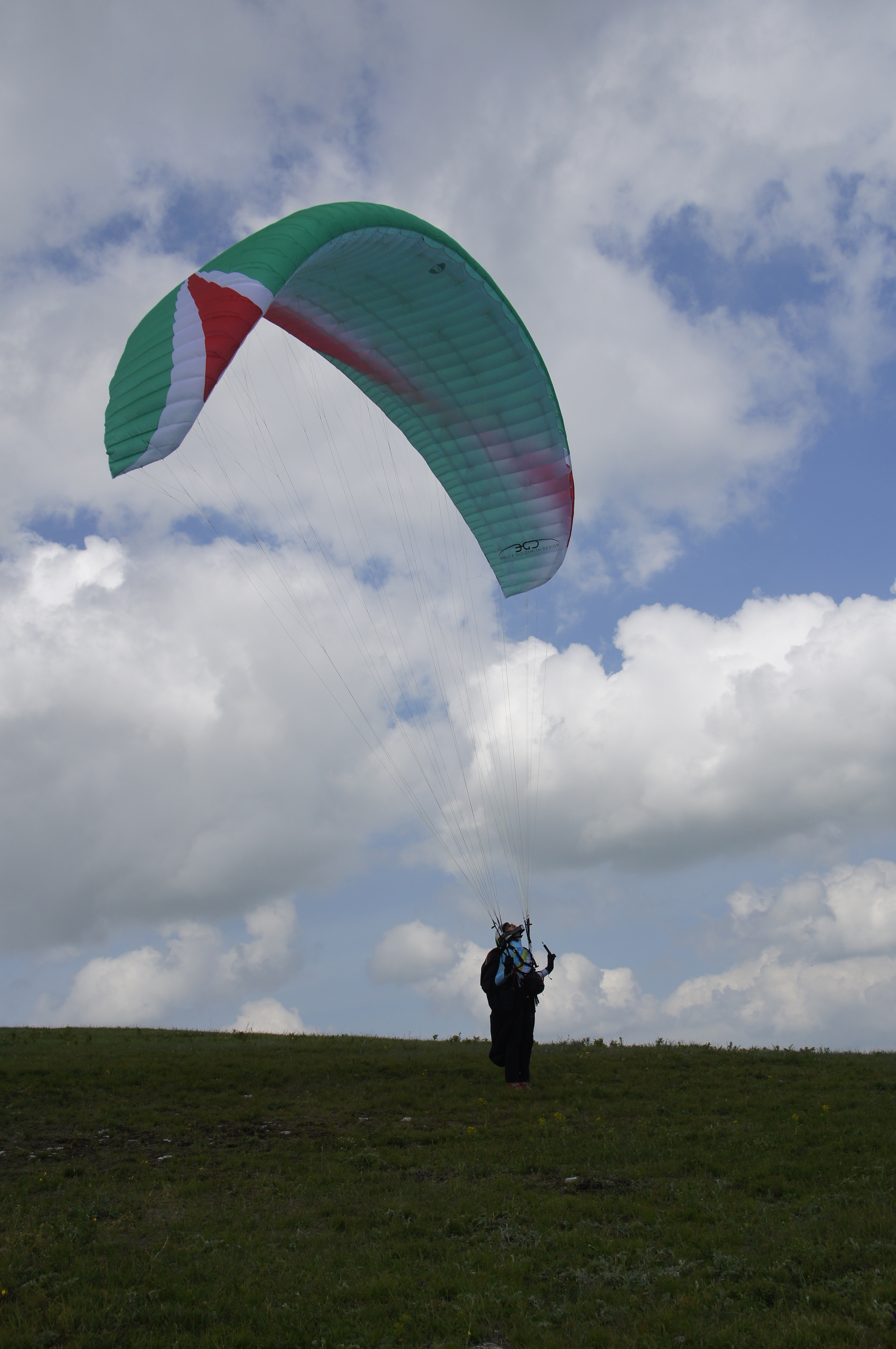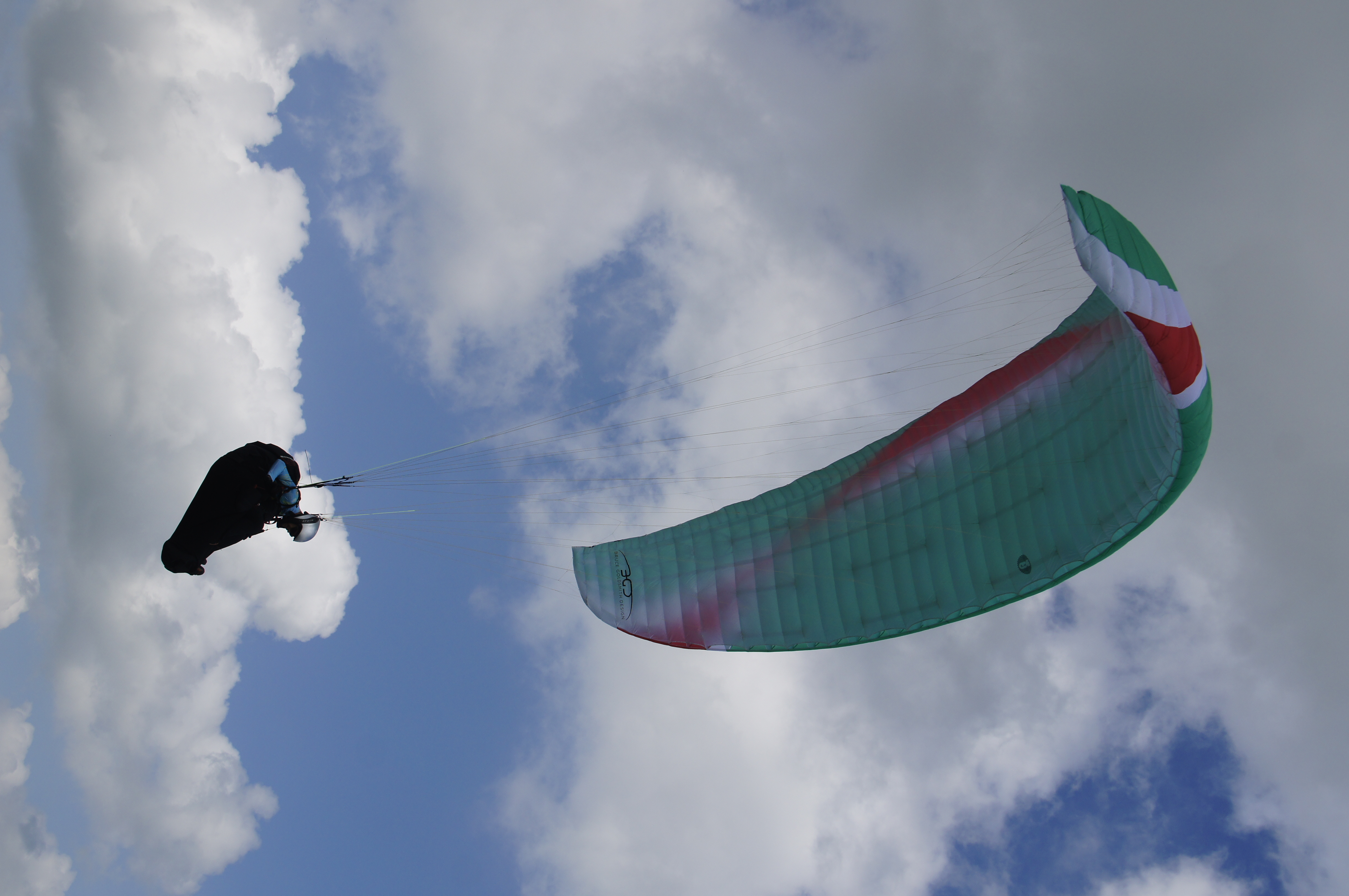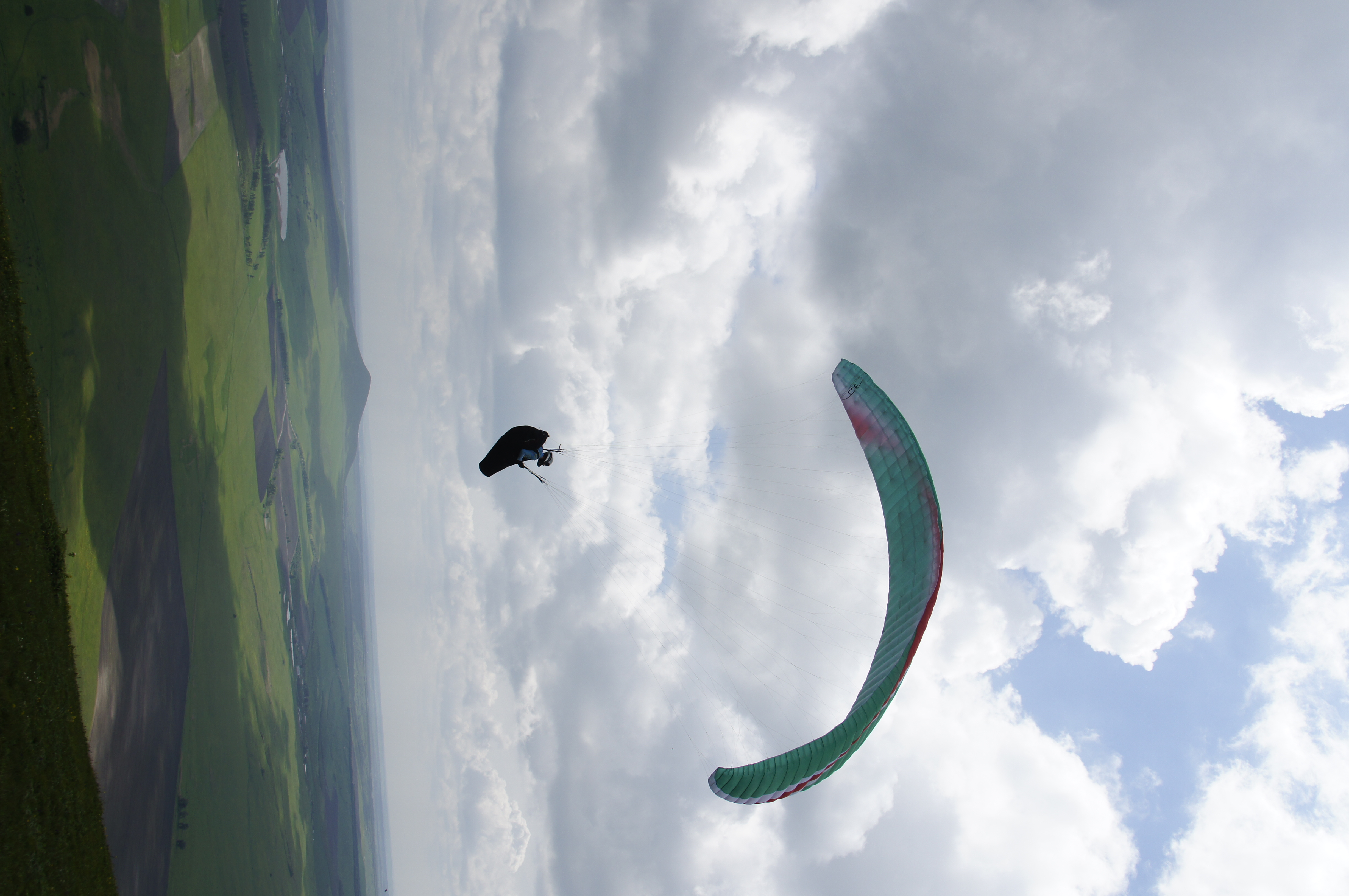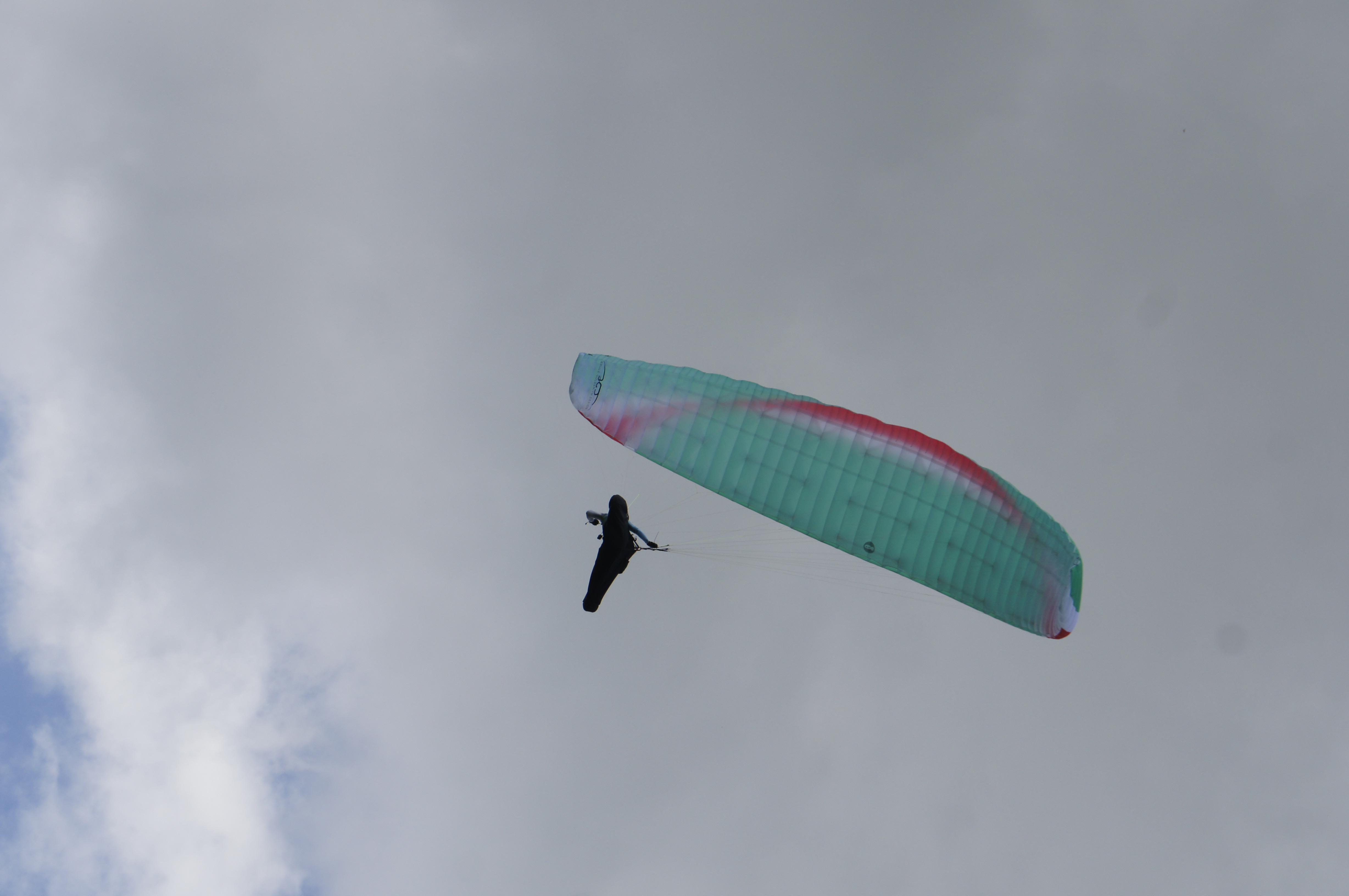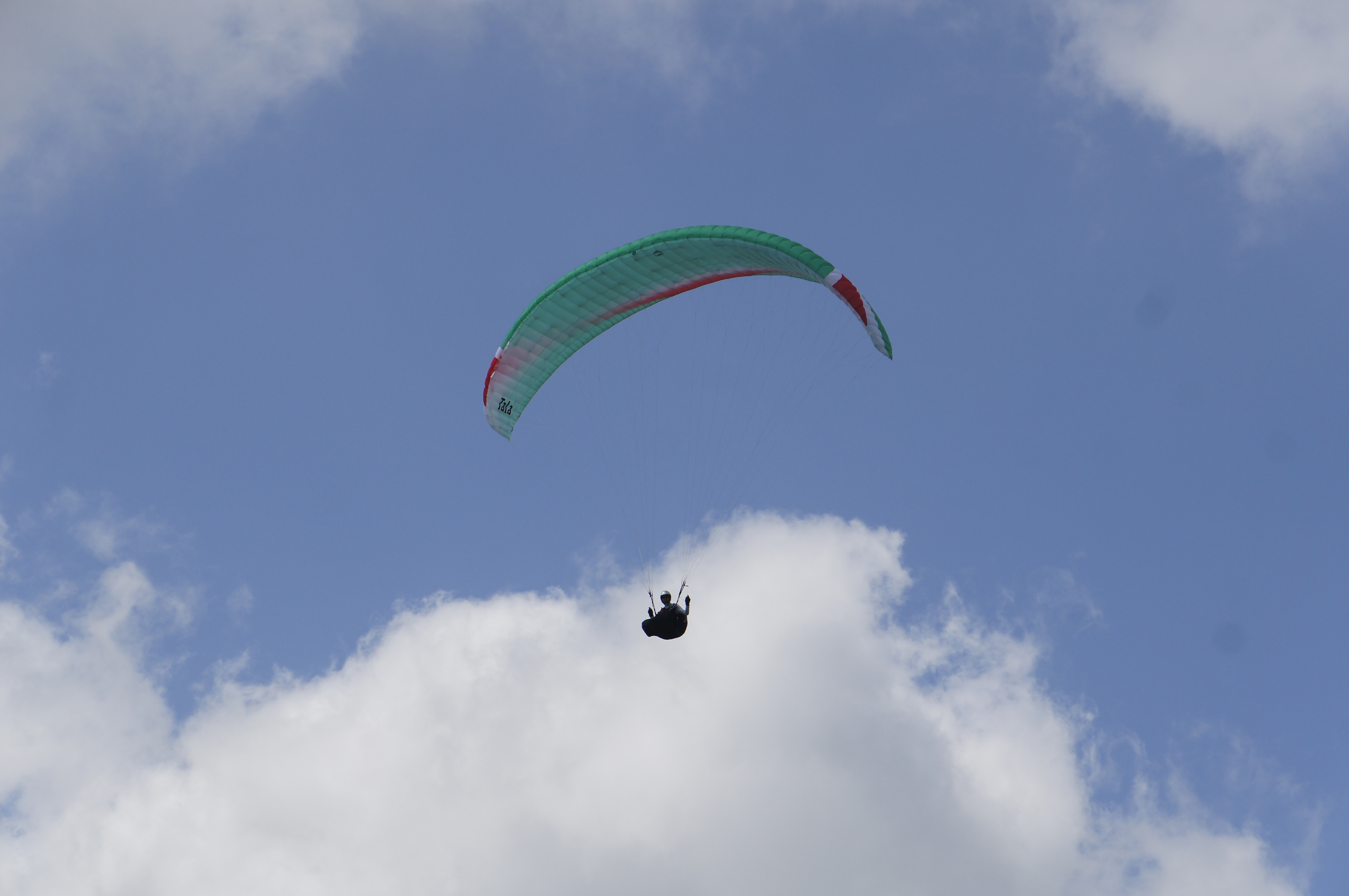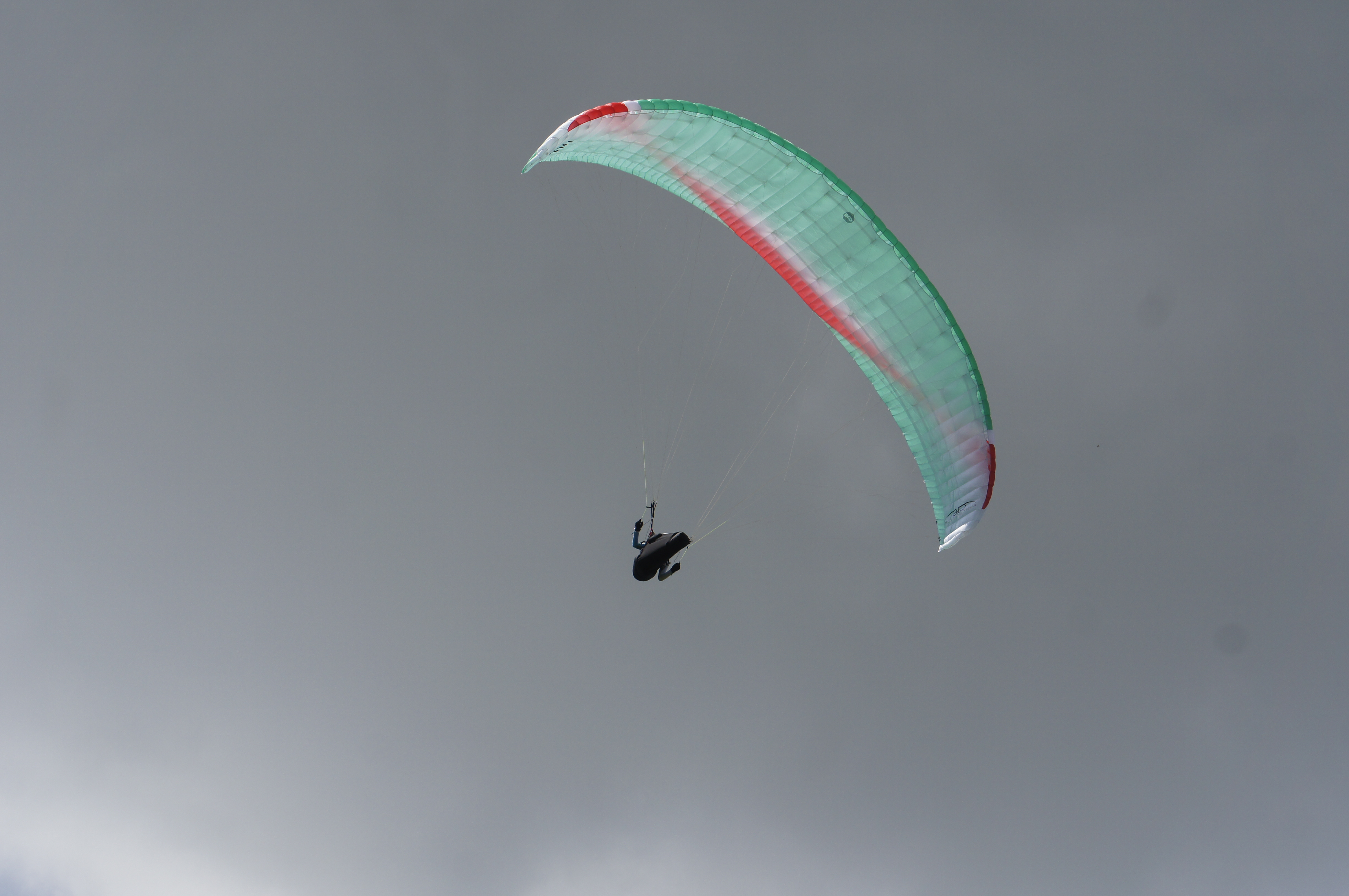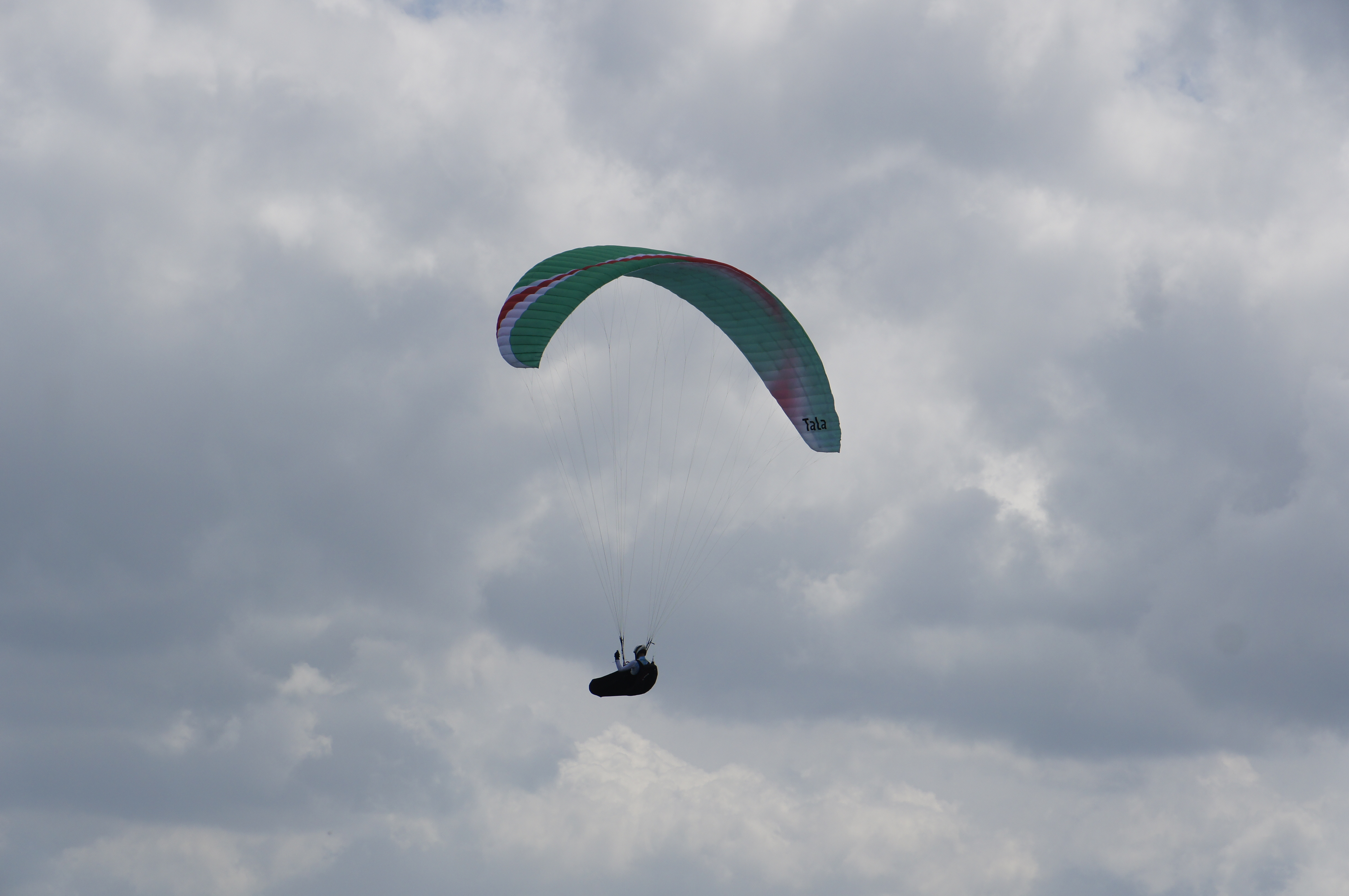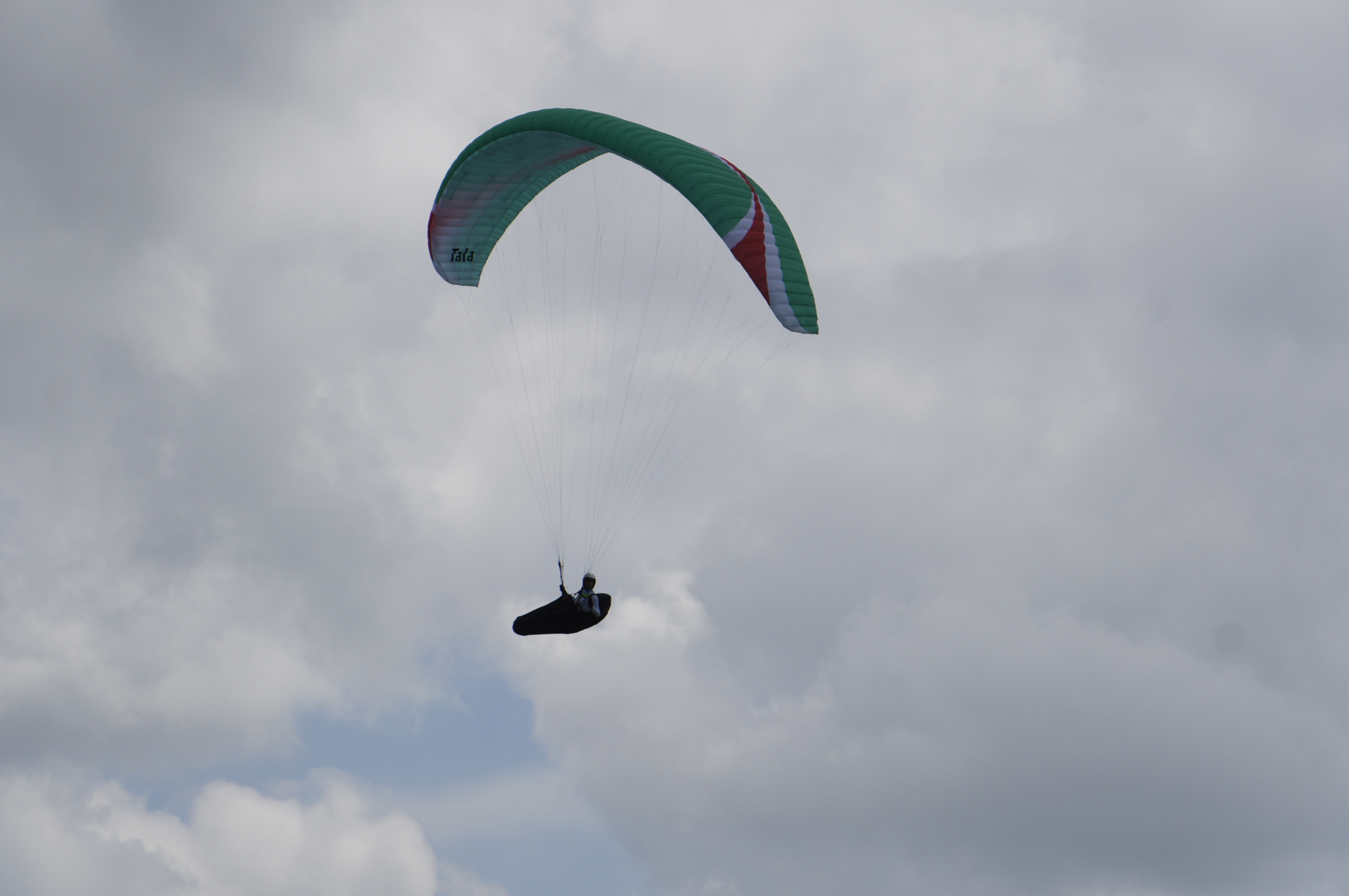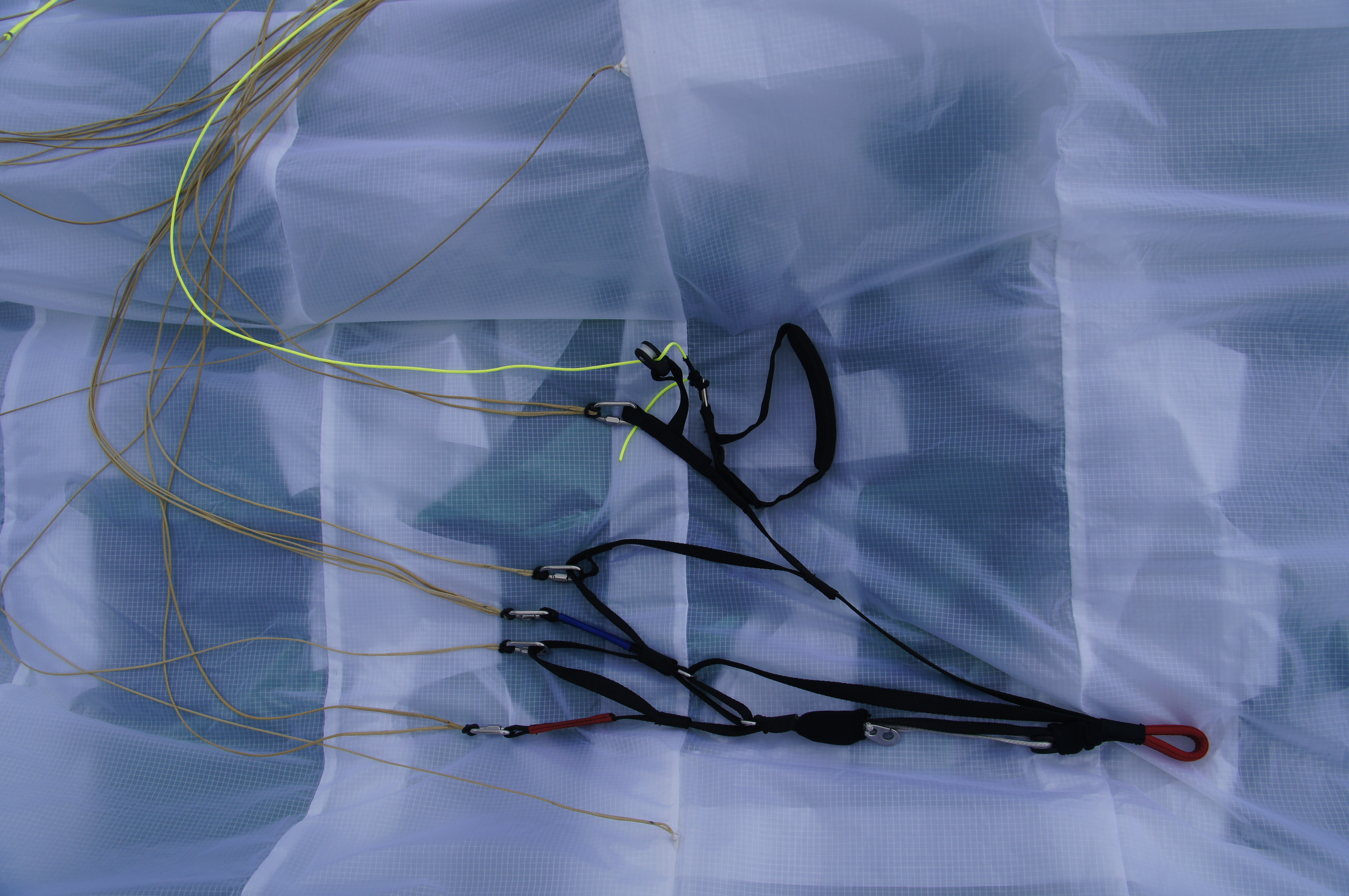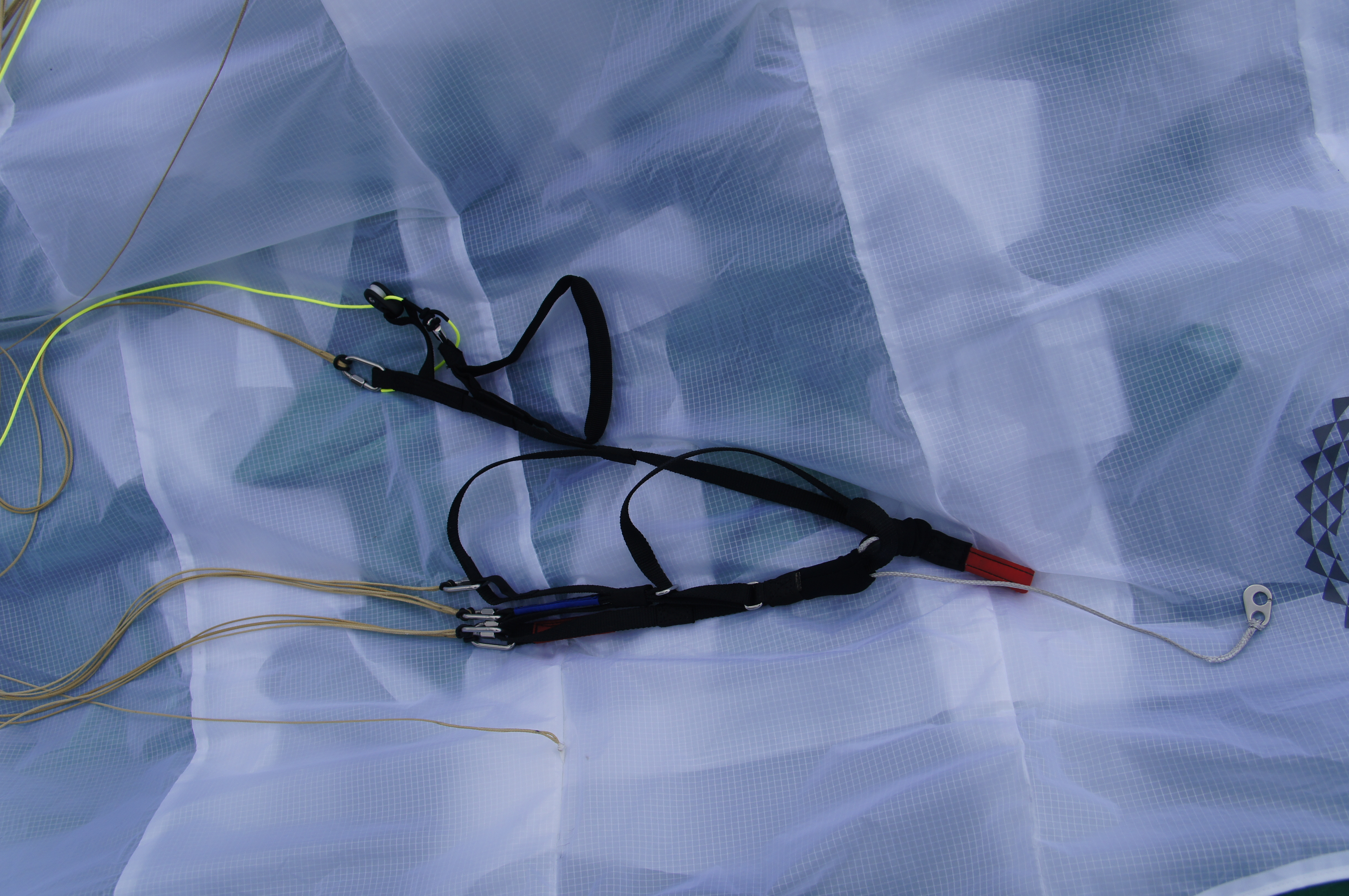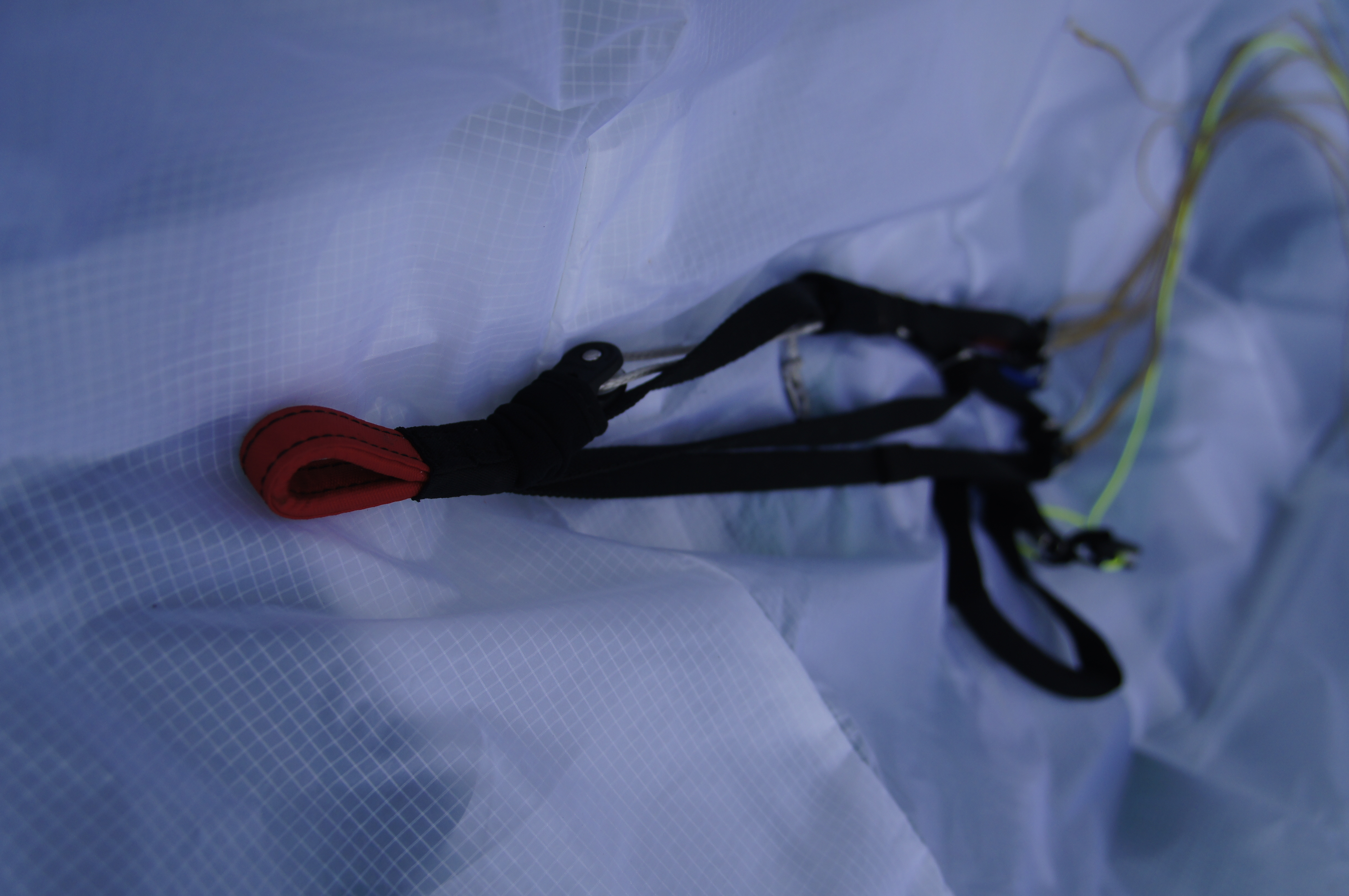Creating one more "performance", an ordinary paraglider constructor usually uses the usual formula of our time: more lines in the leading edge, more sections, less slings. And if the next mega-product manages to fit into the Procrustean bed of EN requirements, it's the turn of marketers. They have a difficult task: to convince the public that it is not a sharp, angry, prone to sudden folding machine (what else could it be with such a design?), but a Unique Wing with Outstanding Flying Power and Super Super-Mega-Safety.
What happens when Bruce Goldsmith builds the wing, not the usual designer? What if this Bruce Goldsmith doesn't just create another Airwave wing, but creates a new brand from scratch along with the wing? After all, it's so easy to make it like everyone else. And so wrong. Goldsmith's Wings has always had its own character, its own face, familiar to Airwave fans. And now that Airwave is dead, it's more important than ever for Goldsmith to retain its former renown. And here we have a new brand - BGD, aka Bruce Goldsmith Design. And the first wing of this brand is the "performance" Tala.
Design
You have to be Goldsmith to go your own way at a time when the EN C market is massively and even happily embracing high technology, which killed the open class, but gave a dramatic increase in volatility. No, Tala too is stuffed with these fashionable technical solutions up to the limit. Leads on the leading edge, additional ribs on the trailing edge, strapless slings on all levels, pivots tightening the trailing edge, narrow free ends - yes, all that's cool, but others already have all that. But there's also a difference. At first, the small (and not so small) features of the design gradually add up to something unusual, distinctive, unlike anything else and, therefore, unexpectedly attractive.
Stitching. A total length of 238 meters in size M is very little for a modern EN C. What is surprising is something else. The slings are webbing-free on all tiers. The lower tiers are of unexpectedly thick, soft, unpainted aramid. The resistance per unit length is like regular braided slings. They last less. But these slings do not get tangled up at all! It seems to be a trifle, but it is pleasant. Prelaunching the lines with the Tala is just a couple of lazy movements of the hands, no more. Of course, the lines on the top tiers are thin, but they are not too confusing either.
Number of sections. It's not conspicuous, but the Tala has surprisingly few sections - only 50. It would seem that with such a number of sections and an elongation of 6 to ensure a decent surface shape is an unrealistic task, but Bruce Goldsmith is not like that. Let's X-ray the Tala in the hot May pre-thunderstorm sun and you'll see that inside this deceptively simple machine is very complicated. More complicated, perhaps, than some "competischen". The complicated cutting of the leading edge panels is the know-how of BGD. Huge unstitched spans - as many as 4 sections near the centerline. Lots of internal ties on all three rows of slings. Cleverly arranged oblique ribs. The whole thing is high-tech. But that's just the inside. Outside - the deceptive simplicity and modesty. By the way, it weighs all this stuff surprisingly little - slightly less than 5 kg.
The shape of a wing. It is almost standard, but it has some peculiarity, which is not like all wings. The arch is moderate. Elongation is normal for the middle EN C class. But the soul of the wing lives in the small details which almost imperceptibly separate the Talu from the mass of equally different modern "performers". The coloring is a matter of taste, but I was not particularly impressed.
Endings. Perhaps the most conservative part of Tala, though even here we could not do without some pleasant trifles. Gas pedal wiring rollers are bearing, neatly hidden in neoprene pockets. Gas pedal wiring cord is thick, slippery and soft Liros. Rivet magnets are nice and also not like all the others (although a couple of times I still met this solution from other manufacturers). But the brake handles could be more interesting - they are too soft and formless. All the same, it's a nit-pick, no problems with the grips, big gloved hand fits through without any problems.
The start, work with the wing on the ground
From the first minutes we meet, Tala is very charming. Yes, this is a girl with character. But if you understand her character, you may not want to talk to other girls (oops, paragliders). Very light for its complex design, Tala stands up with a slight movement of her hands and is firmly fixed above her head, reluctantly falling backwards when the wind weakens. In strong wind the Tala shoots and flies over the pilot - don't hesitate to bring it down with both brakes. Anyway, Tala's takeoff is fast, light and smooth. Even on the ground Tala manages to show me one of the main features of her character - her ability to magically jump from roll to roll. When I put Tala on the ground with her ear, I can flip the wing to the other ear with one short move of my hand! Jumping out from a roll with spring above the pilot's head, the Tala does not stop and rolls to the other side with amazing ease. The pattern of wing's motion is devoid of abruptness and jerks - all Thala's movements are powerful, but smooth. Maybe it's due to the fact that the gyroscope is rather high by today's standards - Goldsmith has always liked this. Technically it's obscenely easy to start in a low wind, the Tala easily forgives pilot's mistakes. You can forgive her tendency to shoot in stronger winds, because she's so easygoing and responsive. If you really wind the wing up with your legs and push the brakes, you are guaranteed an up jump of at least 2-3 meters.
Flight
Vivid character - this is, perhaps, how we can describe our first impressions of flying the Thal. On closer examination, this brightness falls apart into separate features - powerful dynamics, lightness, obedience, and a bunch of more modest features. But all in all, the result is something very unusual and memorable.
Voluptuousness. Leaders of "performance" class (certification not higher than EN C) - for example, the Trango XC2 - are in this class only formally, but they are not always remembered when comparing flight characteristics. I think that in terms of flyability, the Tala ranks well among the honest "performances" that correspond to the philosophy of this class of machinery. The quality across the right side of the polar is quite decent for the Tala. It is difficult to name the exact figure, but for "breaking through" a moderate wind and extensive downwinds on the route is enough by the eye. Tala's fugacity is one of the facets of the peculiar, incomparable lightness that she gives to her pilot. You want to reach that cloud and after several minutes on full gas pedal you're under it. You want to twist a tight, complicated flow from the ground and the heavily laden Tala magically fits into the very core without losing her climb rate even in a dagger-sharp turn. A nicely loaded first stage gas pedal - this is practically standard flight mode for Tala. Although maximum flight speed is probably not one of the Tala's strong points. The speed increase on the first gas pedal stage is about 7 km/h, on the second stage it is about 12... 14 km/h, which corresponds to a top speed of around 51-53 km/h. This is less than the manufacturer claims, and quite modest for such an interesting overall wing. But the quality when flying on the first (and partially on the second) stage of the gas pedal drops very slightly for the Tala. The range of available speeds is also very impressive: The Tala is as good on the gas pedal as she is on the hard brakes. It's amazing, but the Tala can and should be heavily braked to dial in the flow. I don't know what Goldsmith did with the brakes, but in the upper half of their stroke the Tala slows down very convincingly, building maneuverability and providing an unexpectedly low rate of descent in a tight thermal spiral. My usual "performancers" achieve a minimum reduction in the turn at significantly higher speeds, not allowing to work in the flow as densely and passionately. One more specific feature of the Tala is a pronounced (and very wide!) area of controlled parachuting, which begins about 60-70% of the full braking stroke. It is still far from a stall, but the quality of the Tala drops dramatically at this mode. Having realized this trick, I repeatedly landed at the start on strongly clamped Thala - you go down softly and smoothly, like in an elevator. Of course, there is still a risk of crashing, but it is clearly less than in typical "performances".
Maneuverability. The Tala is Miss Fast Roll from Roll to Roll. If we can discuss Tala's volatility, then by the rate of roll change Tala is the leader among "performers" without any doubts, leaving behind even monsters like Trango XC2. In the first quarter of a turn the load on brakes is insignificant, and there is even some backlash. But when you put your hand down about 10-15 centimeters everything gets very interesting. The efficiency of the brakes is such that you can roll the Tala by 90 degrees for just a couple of seconds. The Tala jumps out above the pilot's head and, easily skipping over the equilibrium position, almost instantly finds itself in a roll of the opposite sign. This feature of Tala is easy to notice even on the ground, alternately touching the grass with one and another "ear". And all this with only the paddles! And if you add weight... It's important not to overdo it. I equipped Tala with extremely sensitive and sharp suspension Nearbirds Zippy, after vigorous maneuvers I even caught a couple of times quite noticeable roll swing. Is it necessary to say that with such an impressive reaction to steering the Tala is able to perform almost any turn, which may come to a pilot's head. The turn-in is instantaneous, crisp and explosive. Frightening if the pilot doesn't know what he's getting into - and thrilling if he knows exactly what he's doing and why he's doing it. Once into the turn, Tala doesn't just follow her hand - she continues to respond to the controls with the same magical swiftness and precision. Impressive.
Comfort and informative. The peculiarity of the Tala does not allow for an unambiguous dotting of the i's. On the one hand, the Tala is endowed with powerful roll and pitch dynamics. So powerful, that in a strong jagged flow it is quite real to partially lose control of the wing, and then the Tala will practically fly around the pilot, unexpectedly finding itself in unexpected spatial positions. On the other hand, the Tala is a typical Goldsmith creature with a very high resistance to folding, almost incapable of wriggling on its wingspan and "wiggling its ears". It is an almost rigid wing that although it likes to sway sideways over the pilot's head, it does not require constant fine brake work to stabilize the wing shape and prevent collapse. In addition, the high efficiency of the control makes it possible to stop any accidental movement of the Thala almost instantly. Pilots who are familiar with Goldsmith's earlier products will find this to be familiar and enjoyable, but those with more boneless gliders may not understand the Tala. The comfort of the Tala is far more dependent on personal taste than any other glider. I personally like the Tala. I think, that under not too rough conditions, I can recommend the glider as my first performance wing, even if it is a bit of a performance glider.
The Tala has no problem to be informative. Not at all. Well, except for the fact that there is a lot of information coming to the pilot through all channels. The Tala is again unlike the others when entering a stream, as she moves powerfully in pitch, but loses little speed by breaking the periphery of the stream, even if the stream is narrow and strong. In a couple of hours of swooping, I couldn't figure out whether Tala is being sucked into the flow or thrown out - depending on the nature of the flow, both are possible. I am inclined to believe that on average the Tala is roll neutral at the inlet to the flow. The powerful pitching dynamics determine equally powerful airspeed changes, which are hard not to understand and hear, even if you want to. The load on the brakes plays pleasantly and elastically, allowing you to feel the flow in every detail.
Dynamism and power. You'll love it! High lift and heavy loads are sure signs of wings that can store energy and release it just as powerfully. This was the case with many Airwaves, and so was the Tala. The energy capacity of this wing might seem excessive, but it's the smoothness and predictability of all of Tala's movements that saves the day. Once you get accustomed to the rhythm with which the Tala goes over the pilot's head, you can either hold it firmly overhead with small, anticipatory hand movements (remember high control efficiency!), or... do nothing. The stability to folding in the Tala is expectedly high - both high specific load and rigid inserts have an effect - and even on enough amplitude pitch motions the front edge of the Tala only slightly wrinkles, reliably held by the lines. The wide speed range of the wing allows for a very free approach: the Tala likes and knows how to "crumble" to the ground in controlled parachuting, and dozens of meters "shave the grass" when landing in the doldrums with overdrive of the wing near the ground.
Dangerous flight modes
Asymmetric folding
Perfect. The force on the A-riser is moderate, and it is not very difficult to fold the machine (and this with a very high resistance to 'combat' folding). Folding 50-60% is excellent for an apparatus with fishing lines. Clear and predictable, smooth, from the center wing to the "ear", without a tendency to "ties". Along the chord folding is not developed deeply, about 20-25%. The powerful pitch dynamics, characteristic of the Tala, is shown in all its glory on the asymmetric fold. The pitch can be 60-70 degrees or so, but it is slow and reaches its full amplitude only with the pilot completely passive. Even small adjustments in the brake or weight will greatly influence the way the pilot exits the stall. Heading deviation is below average, about 90 degrees. Loss of altitude is about 30 meters, but due to the powerful dynamics and energy capacity of the Thala, much of this altitude is "played back" on the slide after opening.
Frontal folding
Good. "Excellent" I can not give it because of the pronounced tendency to parachuting. The stall is not very deep along the chord; the apparatus does, however, lose speed immediately and dramatically and tails off to the rear. When the wing returns to the overhead position, the leading edge is almost completely opened, minus the "ears", but the wing does not want to gain speed, remaining parachuting, which may last a couple of seconds. Then a smooth spontaneous increase in speed and normal flight takes place. The roll at the exit is not great, about 30 degrees at most.
The thermal spiral takeoff
For the Tala, as with many modern paragliders, this test proves to be artificial. When one brake is too tight it is very difficult to keep the glider from going into a steep spiral. And if you hold it - then near stall the load on your hand becomes uncomfortably high. The drop in the load on the arm at the beginning of a stall is well pronounced, so it would be hard to miss the beginning of the mode. Also, the Tala tends to increase the angular velocity noticeably just before the start of the stall. Lifting the brake at the beginning of the mode results in a powerful but time delayed oblique roll; having a skillful piloting technique there is a chance to leave the machine in the thermal spiral where the takeoff started.
The modes of fast descent
"Ears."
Good. Not great because of its relatively low efficiency. But it has no problems with neither folding nor mode stability, nor opening, which is not so common in modern equipment. Horizontal velocity does not change noticeably when the "ears" are folded.
"Gas pedal ears
They differ from the simple "ears" only in the use of the gas pedal. The same relatively low efficiency and the same exemplary behavior.
Steep spiral
Perfect. No signs of spiral neutrality noticed. The exit is expectedly accompanied by a very powerful, stretched-out "slide", which does not always need to be compensated for due to the high folding resistance of Talya. To simplify the exit, it is desirable to stretch it by a turn or two.
Conclusions
When entering a relationship with a typical modern "performance" pilot usually builds a kind of almost business partnership with the wing, bypassing the "sharp corners" of someone else's character and gradually "fitting in" with the partner. This will not work with Tala. It seems to me that the beginning of relations with this bright and unusual lady is possible only in the form of a stormy affair. And then... Then you either accept her unconditionally for who she is - or you gather your courage and say a polite goodbye before it goes too far. Original, different, exceptional-it's all about Tala. It's so hard to make a good unusual wing these days - but Goldsmith certainly succeeded. However, connoisseurs and admirers of Goldsmith's work will probably recognize in the Tala its ancestor - the Airwave Mustang. Yes, yes, in spite of the solid difference in age, these wings have a lot in common. Lightweight construction, quite long slings, powerful pitch dynamics, excellent maneuverability. But there's also a difference. The Mustang, with its overpriced for its time specific load and considerable reduction, was created for flights in strong mountain conditions; the Tala's range of applicability is much wider. The Tala is truly versatile, just like any good wing. The only serious limitation is the cryptic phrase in the user manual: the machine is not designed for acro maneuvers. Due to the peculiarity of Tal's character, you will either immediately and unconditionally like it, or reject it as unconditionally. For the same reason it is difficult to put into figures the minimum pilot experience required for Tala. At a rough guess, it's about 50-60 hours of regular thermal flying. However, it may turn out that the pilot can find common ground with this wing, having both higher and lower flying hours. And if he does, he will not be interested in other "performances" for long! With a number of reservations, I can recommend the Tala as the first EN C class machine. I also think that the Tala is a very good choice for bivouac flights somewhere in India, and in the big mountains in general.
Pros of
- Very easy start
- Excellent maneuverability
- High information value
- Low descent in narrow thermal spirals
- Safe enough and comfortable parachute steering mode
- Low weight of the wing
Disadvantages
- "Takes off in windy conditions
Features
- Powerful, but easily controlled by pilot on roll and pitch

